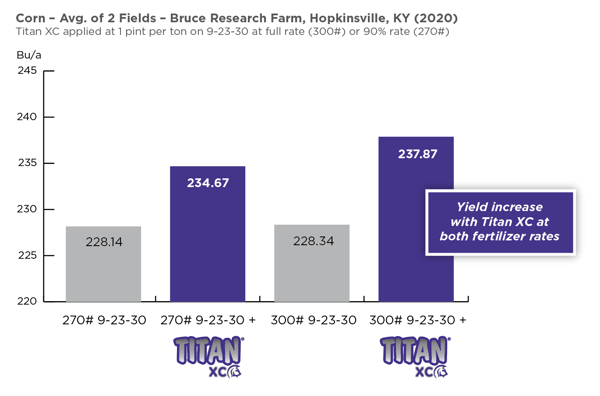 When faced with higher fertilizer prices, many who apply fall fertilizer will wonder if reducing their fertilizer rates makes sense in light of current farm economics.
When faced with higher fertilizer prices, many who apply fall fertilizer will wonder if reducing their fertilizer rates makes sense in light of current farm economics.
It's practical to fertilize this fall to meet the anticipated needs of next year's crop, taking into consideration local recommendations based on soil tests. Reducing fertilizer rates can potentially increase an existing problem, namely the limited availability of nutrients from applied fertilizer in the first season after application. Only about 10-30% of applied P and 20-60% of applied K is typically recovered, or used by the growing crop, in that first season.
To get the most utilization out of dry fertilizers, many farms turn to TITAN XC as a tool to maximize fertilizer efficiency without requiring a big investment. This is important whether a full rate or reduced rate of fertilizer is applied.
In the corn trial below from Nutrien Ag Solutions's Hopkinsville, KY research farm, treating dry fertilizer with TITAN XC (1 pint/ton) led to a yield increase of 6 bushels or more compared to untreated fertilizer. This was true whether the fertilizer was applied at the full rate (300 lbs/acres) or the reduced rate (270 lbs/acre).
 You can see this data and more by watching our short TITAN XC video.
You can see this data and more by watching our short TITAN XC video.
TITAN XC is a valuable tool for increasing nutrient efficiency. By speeding up nutrient release from P and K fertilizers, it can play a key role in the uptake of applied nutrients, helping growers be more efficient with their fertilizer application while also optimizing yield.
Learn more by visiting the TITAN XC Hub.






